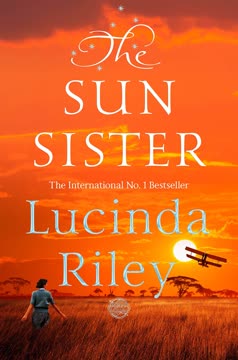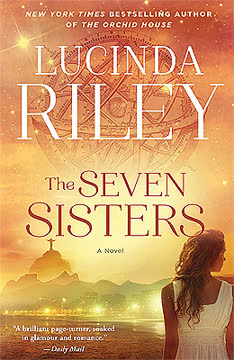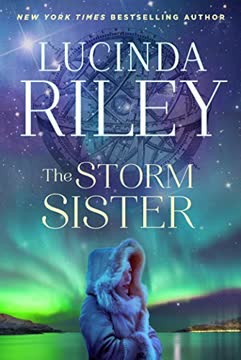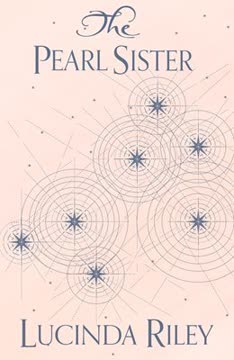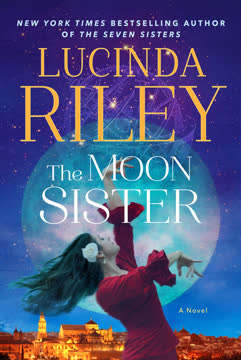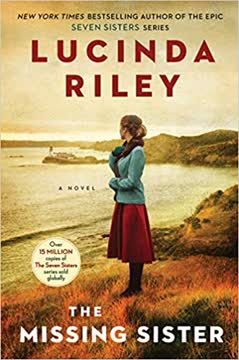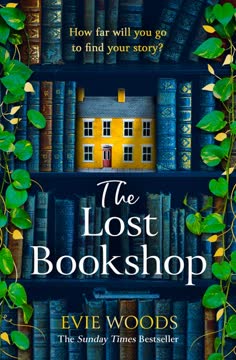Plot Summary
Supermodel in Crisis
Electra d'Aplièse, the youngest of six adopted sisters, is a world-famous supermodel living in New York. Outwardly, she has it all—beauty, fame, and wealth—but beneath the surface, she is spiraling. Haunted by the recent death of her enigmatic adoptive father, Pa Salt, and a string of failed relationships, Electra numbs her pain with alcohol and drugs. Her self-destructive behavior alienates those around her, including her personal assistants and her sisters, and she is unable to process her grief or her anger. Despite her success, Electra feels isolated, misunderstood, and disconnected from her roots, unable to find meaning or belonging in her high-profile existence.
Seeking Solace, Finding Roots
Amidst her chaos, Electra receives a letter from a woman claiming to be her biological grandmother, Stella Jackson. The letter, accompanied by a photograph, stirs something deep within her—a longing to understand her origins. At the same time, she is encouraged by her new, calm, and competent PA, Mariam, to consider her past and the clues left by Pa Salt. Electra's curiosity grows, especially as she learns that her sisters have all found healing and purpose by exploring their own histories. The search for her roots becomes a lifeline, offering the possibility of connection, identity, and perhaps redemption.
The Princess in the Woods
The narrative shifts to 1940s Kenya, where Cecily Huntley-Morgan, a privileged American, has married Bill Forsythe and settled at Paradise Farm. Their marriage is one of convenience, but Cecily finds purpose in her garden and in the local community. When Bill's Maasai friend asks for help hiding his pregnant daughter, Njala, Cecily agrees. After the birth, Njala's baby is abandoned in the woods, left to die according to tribal custom. Cecily, with the help of her dog Wolfie, finds the infant and saves her life. She names the baby Stella, after the Maasai word for "star," and raises her as her own, with the help of a Maasai housekeeper, Lankenua. This act of compassion and rebellion against both colonial and tribal norms sets the stage for generations of struggle and resilience.
Cecily's American Dream
After a confrontation with her racist mother in New York, Cecily is forced to leave her family home, taking Stella and Lankenua with her. They find refuge with Rosalind, a progressive friend, and Cecily becomes a teacher in a pioneering school for black children. Despite financial hardship and social ostracism, Cecily creates a loving home for Stella, who grows up between worlds—cherished by her adoptive mother, but always aware of her difference. Cecily's sacrifice and determination give Stella opportunities that would have been impossible in Kenya, but the cost is permanent estrangement from her own family and the loss of her marriage to Bill, who remains in Africa.
Happy Valley Shadows
The story of Cecily's years in Kenya is interwoven with the infamous Happy Valley set—a group of British aristocrats and settlers known for their hedonism and scandals. Cecily's life is touched by the murder of Joss Erroll, the Earl of Erroll, and the subsequent trial, which rocks the colonial community. The backdrop of war, shifting power, and the eventual Mau Mau uprising underscores the fragility of the colonial world and the personal losses Cecily endures, including the death of her own child and the slow unraveling of her marriage.
Love, Loss, and Lions
Cecily's marriage to Bill is marked by moments of tenderness and long stretches of loneliness. The loss of their baby, Fleur, to pre-eclampsia devastates Cecily, but the arrival of Stella brings new hope. Yet, the realities of race, belonging, and societal expectations mean that Cecily can never openly claim Stella as her daughter. Bill's absences and the demands of the farm further isolate Cecily, but her love for Stella sustains her. The eventual move to New York is both an escape and a new beginning, but it comes at the cost of leaving Bill and the life she built in Africa.
A Child Called Stella
Stella grows up in Brooklyn, raised by Cecily and surrounded by strong, progressive women like Rosalind. She excels academically and becomes involved in the civil rights movement, inspired by her own experiences of prejudice and the sacrifices of her adoptive mother. Stella's journey takes her to Vassar and then to Columbia Law School, where she becomes a prominent civil rights lawyer and activist. Her work is driven by a sense of duty to those who came before her and to the generations who will follow. Yet, her personal life is marked by sacrifice—she gives birth to a daughter, Rosa, whom she struggles to raise amidst the demands of her career and the legacy of trauma.
Exile and New Beginnings
Rosa, Stella's daughter, is a brilliant but troubled child who spirals into addiction and disappears into the underbelly of New York. Despite Stella's efforts to save her, Rosa dies alone, her body unclaimed and buried in a mass grave. Electra, Rosa's daughter, is left at Hale House, a refuge for the children of addicts, and is eventually adopted by Pa Salt. The cycle of abandonment, addiction, and resilience continues, but each generation also carries the seeds of hope and the possibility of breaking free.
Civil Rights and Sacrifice
Stella's career as a civil rights lawyer brings her into contact with the great movements and leaders of her time, including Martin Luther King Jr. and the NAACP. She is arrested, beaten, and threatened, but her commitment never wavers. The personal cost is high—her relationship with Rosa is strained, and she is haunted by guilt over her inability to save her daughter. Yet, Stella's work changes lives and paves the way for future generations, including Electra, to claim their place in the world.
Rosa's Downward Spiral
Rosa's story is one of brilliance undone by trauma and addiction. Despite her intelligence and early promise, she is unable to escape the shadows of her past and the pressures of her mother's expectations. Her descent into drugs, crime, and eventual death is a stark reminder of the generational wounds that can persist even in the face of love and opportunity. Rosa's fate is a turning point for both Stella and Electra, forcing them to confront the realities of loss and the need for healing.
Electra's Descent and Recovery
Electra's journey mirrors those of her mother and grandmother—brilliant, beautiful, and broken by pain she cannot name. Her addiction nearly kills her, but with the help of friends, therapy, and the discovery of her roots, she begins to heal. Rehab is grueling, but it offers Electra the chance to confront her demons, make amends, and find purpose beyond the superficial world of modeling. The support of her sisters, her PA Mariam, and her growing relationship with Miles, a fellow survivor, help her to rebuild her life.
Family, Forgiveness, and Voice
As Electra learns the full story of her origins from Stella, she is finally able to forgive herself and those who came before her. The knowledge of her Maasai heritage, her grandmother's activism, and her mother's struggles give her a sense of belonging and responsibility. Electra reconnects with her sisters and finds strength in their shared experiences. She also helps those around her—like Vanessa, a young addict she meets in rehab, and her PA Mariam, who faces her own challenges in love and faith.
The Power of Speaking Out
Encouraged by Stella and Miles, Electra finds her voice and speaks publicly about her struggles with addiction at a global concert for Africa. Her honesty and vulnerability inspire millions and help raise awareness and funds for drop-in centers for young addicts. Electra's transformation from silent sufferer to outspoken advocate marks the culmination of her journey and the fulfillment of her family's legacy of courage and compassion.
Coming Home to Self
In the end, Electra comes to understand that home is not a place, but a sense of self and connection to others. She embraces her heritage, her family, and her own power to make a difference. The cycle of pain is not broken, but transformed—through love, forgiveness, and the willingness to speak the truth. Electra's story is one of survival, resilience, and the enduring strength of women who, in the face of fire, become the fire themselves.
Characters
Electra d'Aplièse
Electra is the youngest of the adopted d'Aplièse sisters, a strikingly beautiful and successful supermodel whose outward confidence masks deep insecurity, addiction, and a sense of rootlessness. Her journey is one of self-destruction and eventual healing, as she confronts the pain of abandonment, the loss of her adoptive father, and the legacy of generational trauma. Electra's relationships—with her sisters, her PA Mariam, her grandmother Stella, and her lover Miles—are marked by both conflict and profound connection. Her psychological arc moves from denial and anger to acceptance, forgiveness, and activism, as she finds her voice and purpose in helping others.
Stella Jackson
Born in Kenya as the abandoned daughter of a Maasai princess and raised by Cecily, Stella becomes a pioneering civil rights lawyer and activist in America. Her life is shaped by the sacrifices of her adoptive mother, the challenges of growing up between worlds, and her own drive to fight for justice. Stella's relationship with Electra is initially distant, but becomes a source of healing and understanding for both. She is haunted by guilt over her daughter Rosa's fate, but channels her pain into activism and mentorship. Stella embodies strength, compassion, and the power of speaking out.
Cecily Huntley-Morgan
An American socialite who marries into colonial Kenya, Cecily's life is marked by loss, resilience, and rebellion against societal norms. Her decision to save and raise Stella, a Maasai foundling, is both an act of love and defiance. Cecily's sacrifices—leaving her family, enduring prejudice, and building a new life in exile—shape the destinies of those who follow. Her relationship with Bill is complex, moving from convenience to genuine love, but always shadowed by the demands of duty and the realities of race and belonging. Cecily's legacy is one of quiet heroism and maternal devotion.
Bill Forsythe
Bill is Cecily's English husband, a cattle farmer in Kenya whose life is shaped by war, loss, and the changing tides of colonial power. He is both a source of strength and a figure of absence, often emotionally distant but ultimately loyal. Bill's acceptance of Stella and his eventual reconciliation with Cecily reflect his capacity for growth and forgiveness. His psychological journey is one of regret, longing, and the search for meaning in a world that is constantly shifting beneath his feet.
Rosa Jackson
Stella's daughter and Electra's mother, Rosa is a gifted but deeply wounded young woman who cannot escape the shadows of her past. Her life is marked by rebellion, addiction, and a desperate search for love and belonging. Despite her intelligence and the opportunities given to her, Rosa is undone by trauma and the weight of expectation. Her tragic fate is a catalyst for both Stella's activism and Electra's healing, a reminder of the generational wounds that can persist even in the face of love.
Mariam Kazemi
Electra's PA, Mariam is a steadying presence in the chaos of Electra's life. Her own story—balancing faith, family, and love—mirrors the novel's themes of identity and belonging. Mariam's relationship with Tommy, an army vet, is complicated by cultural and religious differences, but her integrity and compassion make her a vital support for Electra and others.
Miles Williamson
A lawyer and fellow survivor, Miles becomes Electra's confidant, friend, and eventually romantic partner. His own journey through addiction and recovery gives him insight and empathy, and his work with at-risk youth inspires Electra to find her own purpose. Miles's faith and commitment to service provide a counterpoint to Electra's struggles, and their relationship is built on mutual respect, honesty, and the willingness to face the past.
Vanessa
A teenager Electra meets in rehab, Vanessa's story echoes the cycles of trauma and resilience that run through the novel. Her struggles and eventual recovery inspire Electra to use her platform to help others, and her presence is a reminder of the stakes involved in the fight against addiction.
Tommy
An army veteran and Electra's unofficial bodyguard, Tommy is a figure of strength and vulnerability. His relationship with Mariam is marked by cultural and personal obstacles, but his loyalty and kindness make him an essential part of Electra's chosen family.
Rosalind
Cecily's friend and Stella's adoptive mother in name, Rosalind is a pioneering figure in the fight for educational equality. Her school for black children in Brooklyn is a haven for Stella and others, and her activism and support are crucial in shaping the destinies of those around her.
Plot Devices
Dual Timeline Structure
The novel employs a dual timeline, alternating between Electra's contemporary struggles and the historical narratives of her ancestors—Cecily, Stella, and Rosa. This structure allows for the gradual revelation of secrets, the mirroring of generational trauma and resilience, and the thematic exploration of identity, belonging, and the search for home. The past informs the present, and Electra's journey is both a continuation and a transformation of those who came before her.
Letters and Clues
Letters and clues, photographs, and other artifacts serve as catalysts for Electra's search for her roots. Pa Salt's clues, Stella's letter, and the armillary sphere with its coordinates are all plot devices that propel Electra—and the reader—on a journey of discovery. These elements create suspense, deepen the emotional stakes, and underscore the importance of history and memory.
Generational Trauma and Healing
The novel explores the ways in which generational trauma and healing, addiction, and loss are passed down through generations, but also how love, courage, and the willingness to confront the past can break the cycle. The psychological journeys of Cecily, Stella, Rosa, and Electra are intertwined, each shaped by the choices and sacrifices of the others. Healing is depicted as a communal, intergenerational process.
Social and Historical Backdrop
The characters' lives are shaped by the major events of their times—colonialism, war, the civil rights movement, and the AIDS and drug epidemics. These social and historical backdrops provide context, raise the stakes, and highlight the interconnectedness of personal and political struggles. The novel uses real historical figures and events to ground its fiction in reality.
Redemption Through Activism
For both Stella and Electra, activism becomes a means of redemption, transforming personal pain into collective healing. Their journeys from silence and shame to speaking out and making a difference are central to the novel's message. The power of voice, community, and service is depicted as the ultimate path to redemption and self-acceptance.
Analysis
The Sun Sister is a sweeping, multi-generational saga that explores the complexities of race, belonging, and the search for self in a world marked by both privilege and oppression. Through the intertwined stories of Electra, Stella, Cecily, and Rosa, Lucinda Riley examines how the wounds of the past can echo through generations, but also how love, courage, and the willingness to confront the truth can lead to healing and transformation. The novel is unflinching in its portrayal of addiction, prejudice, and loss, but ultimately hopeful—celebrating the power of women to survive, adapt, and become the fire that forges a better future. Its lessons are timely and universal: that identity is both inherited and chosen, that home is found in connection rather than place, and that the act of speaking out—claiming one's story—can change not only individual lives, but the world.
Last updated:
FAQ
Synopsis & Basic Details
What is The Sun Sister about?
- A Supermodel's Unraveling: The Sun Sister follows Electra d'Aplièse, a world-renowned supermodel whose glamorous life in New York masks a deep struggle with addiction and a profound sense of isolation after the death of her adoptive father, Pa Salt. Her journey begins as she grapples with her self-destructive tendencies and a mysterious letter hinting at her biological origins.
- Generational Quest for Identity: The narrative weaves between Electra's contemporary struggles and the compelling historical story of her ancestor, Cecily Huntley-Morgan, a privileged American socialite who finds herself in 1940s colonial Kenya. Cecily's life takes an unexpected turn when she defies societal norms to save and raise an abandoned Maasai baby, Stella, setting in motion a powerful lineage of strong, resilient women.
- Legacy of Love and Activism: The novel explores themes of identity, belonging, and the enduring impact of the past, as Electra uncovers her family's history of courage, sacrifice, and activism through Stella, who becomes a pioneering civil rights lawyer in America. It culminates in Electra finding her own voice and purpose by embracing her heritage and confronting her personal demons.
Why should I read The Sun Sister?
- Rich Historical Tapestry: Readers are immersed in vibrant historical settings, from the decadent "Happy Valley" set in colonial Kenya to the tumultuous Civil Rights era in Harlem, offering a fascinating glimpse into pivotal moments of the 20th century and their profound impact on individual lives.
- Deep Character Exploration: The novel delves into the complex psychological landscapes of its female protagonists, particularly Electra's raw journey through addiction and recovery, and Cecily's quiet rebellion and fierce maternal love, providing a deeply emotional and relatable exploration of human vulnerability and resilience.
- Themes of Identity & Belonging: Beyond the captivating plot, The Sun Sister offers a powerful meditation on what it means to belong, both to a family and to oneself, and how understanding one's roots can provide a foundation for future purpose and healing, making it a compelling read for those interested in self-discovery and intergenerational connections.
What is the background of The Sun Sister?
- Historical & Cultural Immersion: The novel is deeply rooted in historical events, particularly the colonial period in Kenya, the infamous "Happy Valley" set, and the American Civil Rights Movement. It meticulously portrays the social norms, racial prejudices, and political tensions of these eras, drawing on real historical figures and events to lend authenticity.
- Geographical Contrasts: The story spans diverse geographical landscapes, from the opulent yet isolating penthouses of New York and the grand estates of English countryside to the wild, untamed plains of Kenya and the vibrant, struggling communities of Harlem. These settings are not mere backdrops but active forces shaping the characters' experiences and identities.
- Allegorical Mythology: As part of the "Seven Sisters" series, the book is allegorically based on the mythology of the Pleiades star constellation. Electra, as the "lost sister," embodies themes of searching for one's place and the hidden connections that bind individuals across time and space, adding a layer of mystical depth to the narrative.
What are the most memorable quotes in The Sun Sister?
- "Some women fear the fire, Some women simply become it...": This powerful epigraph, attributed to R.H. Sin, serves as a central theme, foreshadowing the transformative journeys of Electra and her ancestors who, despite immense suffering and societal pressures, rise with strength and resilience. It encapsulates the novel's exploration of female empowerment and endurance.
- "Life can only be understood backwards; but it must be lived forwards.": This quote by Søren Kierkegaard, revealed as Electra's personal inscription on the armillary sphere, profoundly impacts her. It highlights the novel's dual timeline structure and the idea that understanding one's past is crucial for navigating the future, especially for Electra's journey of recovery and self-acceptance.
- "You're just flesh and blood, like all of us. Human...": Spoken by Tommy to Electra after her overdose, this simple yet profound statement is a pivotal moment in Electra's recovery. It strips away her celebrity persona and self-loathing, reminding her of her inherent humanity and vulnerability, paving the way for her to accept help and begin healing.
What writing style, narrative choices, and literary techniques does Lucinda Riley use?
- Immersive Dual Narrative: Riley masterfully employs a dual timeline structure, seamlessly interweaving Electra's contemporary story with Cecily's historical narrative. This choice creates a sense of unfolding mystery and allows for powerful thematic echoes across generations, revealing how past events directly influence present lives.
- Sensory-Rich Prose: The author's writing is highly descriptive and sensory, bringing each setting to vivid life, from the "stench of New York" contrasted with the "pure air" of Atlantis, to the "metallic charge of future rain" in Kenya. This rich detail immerses the reader in the characters' environments and emotional states.
- Internal Monologue & Emotional Depth: Riley frequently utilizes deep internal monologues, particularly for Electra and Cecily, providing unfiltered access to their thoughts, fears, and unspoken motivations. This technique fosters strong reader empathy and highlights the psychological complexities of characters grappling with trauma, identity, and societal expectations.
Hidden Details & Subtle Connections
What are some minor details that add significant meaning?
- Electra's "Tricky" Nickname: Electra reveals her sisters called her "Tricky" as a child, a seemingly innocent sibling taunt that deeply impacted her self-perception. This subtle detail highlights her lifelong feeling of being misunderstood and difficult, contributing to her rebellious nature and later self-sabotage, as she felt she had to live up to this perceived identity.
- Kiki Preston's "Silver Needle": The major at Woodhead Hall mentions Kiki Preston was known as "the girl with the silver needle," a subtle historical allusion to her real-life reputation for drug use (specifically morphine or heroin). This detail foreshadows Kiki's underlying struggles and eventual tragic end, adding a layer of hidden darkness beneath her glamorous facade.
- Bill's "Paradise Lost" Reference: When naming their farm "Paradise Farm," Bill references John Milton's epic poem Paradise Lost, and later Paradise Regained. This literary allusion subtly foreshadows the loss and subsequent regaining of happiness and purpose within their marriage, and Cecily's eventual departure from this "paradise" for a new life.
What are some subtle foreshadowing and callbacks in The Sun Sister?
- Kiki's Advice on Living for Today: Kiki tells Cecily, "The only time we have is now, in this minute, or millisecond maybe..." and "one should never save special things for another day, because tomorrow may never come." This seemingly philosophical advice subtly foreshadows Kiki's own impulsive, hedonistic lifestyle and her eventual suicide, revealing a deep-seated despair that she masks with living in the moment.
- Bill's Comments on War's Inevitability: Early in Cecily's story, Bill frequently discusses the impending war in Europe and his belief that it's unavoidable, even mentioning his potential involvement. This foreshadows his later military service and the profound impact the war will have on his character and his relationship with Cecily, leading to his emotional distance.
- Electra's Fear of Small Spaces: Electra's claustrophobia, stemming from a childhood incident where she was locked in a boat cabin, is a recurring callback. This seemingly minor phobia symbolizes her deeper feelings of entrapment and lack of control in her life, particularly in her celebrity persona, and her struggle to break free from self-imposed or external constraints.
What are some unexpected character connections in The Sun Sister?
- Tommy's Unrequited Love for Mariam: The novel subtly reveals Tommy, Electra's devoted fan and later bodyguard, is deeply in love with Mariam. His confession at an AA meeting, overheard by Electra, highlights his vulnerability and the quiet depth of his character, adding an unexpected romantic subplot complicated by cultural and religious barriers.
- Bill Forsythe's Link to Julius Woodhead: It's revealed that Bill's brother is the major Cecily met at Woodhead Hall, and Julius is their nephew. This connection ties Bill directly to Cecily's past heartbreak and the man who betrayed her, adding a layer of dramatic irony and personal history to Bill's eventual proposal and their complex relationship.
- Stella Jackson's Connection to Mother Hale: Electra discovers she was found at Hale House, a real-life institution run by Mother Clara Hale. Stella later reveals she knew Mother Hale and that her daughter, Rosa, was also connected to the house. This links Electra's origins to a significant figure in African-American history and the broader struggle for social justice, deepening her sense of heritage.
Who are the most significant supporting characters?
- Kiki Preston: Beyond her role as Cecily's godmother, Kiki is a pivotal figure representing the hedonistic and ultimately tragic side of the Happy Valley set. Her character, based on a real person, embodies the allure and destructive nature of extreme privilege and addiction, serving as a cautionary tale and a catalyst for Cecily's journey.
- Nygasi: Bill's Maasai friend and companion, Nygasi is more than just a servant; he is a loyal confidant and a bridge to Maasai culture. His quiet wisdom, unwavering presence, and role in Njala's story (and by extension, Stella's) highlight the novel's themes of cultural understanding and the dignity of indigenous peoples.
- Lizzie: Electra's roommate in rehab, Lizzie initially appears as a superficial character obsessed with beauty and her husband. However, her vulnerability, her own struggles with codependency and body image, and her eventual decision to leave her abusive marriage make her a powerful symbol of female solidarity and the possibility of self-worth beyond external validation.
Psychological, Emotional, & Relational Analysis
What are some unspoken motivations of the characters?
- Electra's Anger as a Shield: Electra's pervasive anger, particularly towards Pa Salt and her sisters, often masks her deep-seated shame and vulnerability. Her outbursts are a defense mechanism to prevent others from getting too close and witnessing her pain, stemming from a childhood feeling of being "Tricky" and unlovable.
- Cecily's Need for Purpose: After her broken engagement and the loss of her baby Fleur, Cecily's fierce determination to save and raise Stella is driven by an unspoken need for purpose and a channel for her maternal love. This act of defiance against societal norms fills the void left by her personal tragedies and gives her life profound meaning.
- Bill's Emotional Reticence: Bill's stoicism and frequent absences are not just due to his work or personality; they are a coping mechanism for his own past traumas, including his broken engagement and the horrors of war. His emotional distance is an unspoken attempt to protect himself from further pain, even as it inadvertently hurts those he loves.
What psychological complexities do the characters exhibit?
- Electra's Celebrity Persona vs. True Self: Electra struggles with a profound disconnect between her public supermodel persona and her authentic, vulnerable self. Her addiction is a coping mechanism for the immense pressure and loneliness of fame, highlighting the psychological toll of living a life that is constantly scrutinized and often feels inauthentic.
- Kiki's Hedonism as Self-Medication: Kiki Preston's
Synopsis & Basic Details
What is The Sun Sister about?
- A Supermodel's Unraveling: The Sun Sister follows Electra d'Aplièse, a world-renowned supermodel whose glamorous life in New York masks a deep struggle with addiction and a profound sense of isolation after the death of her adoptive father, Pa Salt. Her journey begins as she grapples with her self-destructive tendencies and a mysterious letter hinting at her biological origins.
- Generational Quest for Identity: The narrative weaves between Electra's contemporary struggles and the compelling historical story of her ancestor, Cecily Huntley-Morgan, a privileged American socialite who finds herself in 1940s colonial Kenya. Cecily's life takes an unexpected turn when she defies societal norms to save and raise an abandoned Maasai baby, Stella, setting in motion a powerful lineage of strong, resilient women.
- Legacy of Love and Activism: The novel explores themes of identity, belonging, and the enduring impact of the past, as Electra uncovers her family's history of courage, sacrifice, and activism through Stella, who becomes a pioneering civil rights lawyer in America. It culminates in Electra finding her own voice and purpose by embracing her heritage and confronting her personal demons.
Why should I read The Sun Sister?
- Rich Historical Tapestry: Readers are immersed in vibrant historical settings, from the decadent "Happy Valley" set in colonial Kenya to the tumultuous Civil Rights era in Harlem, offering a fascinating glimpse into pivotal moments of the 20th century and their profound impact on individual lives.
- Deep Character Exploration: The novel delves into the complex psychological landscapes of its female protagonists, particularly Electra's raw journey through addiction and recovery, and Cecily's quiet rebellion and fierce maternal love, providing a deeply emotional and relatable exploration of human vulnerability and resilience.
- Themes of Identity & Belonging: Beyond the captivating plot, The Sun Sister offers a powerful meditation on what it means to belong, both to a family and to oneself, and how understanding one's roots can provide a foundation for future purpose and healing, making it a compelling read for those interested in self-discovery and intergenerational connections.
What is the background of The Sun Sister?
- Historical & Cultural Immersion: The novel is deeply rooted in historical events, particularly the colonial period in Kenya, the infamous "Happy Valley" set, and the American Civil Rights Movement. It meticulously portrays the social norms, racial prejudices, and political tensions of these eras, drawing on real historical figures and events to lend authenticity.
- Geographical Contrasts: The story spans diverse geographical landscapes, from the opulent yet isolating penthouses of New York and the grand estates of English countryside to the wild, untamed plains of Kenya and the vibrant, struggling communities of Harlem. These settings are not mere backdrops but active forces shaping the characters' experiences and identities.
- Allegorical Mythology: As part of the "Seven Sisters" series, the book is allegorically based on the mythology of the Pleiades star constellation. Electra, as the "lost sister," embodies themes of searching for one's place and the hidden connections that bind individuals across time and space, adding a layer of mystical depth to the narrative.
What are the most memorable quotes in The Sun Sister?
- "Some women fear the fire, Some women simply become it...": This powerful epigraph, attributed to R.H. Sin, serves as a central theme, foreshadowing the transformative journeys of Electra and her ancestors who, despite immense suffering and societal pressures, rise with strength and resilience. It encapsulates the novel's exploration of female empowerment and endurance.
- "Life can only be understood backwards; but it must be lived forwards.": This quote by Søren Kierkegaard, revealed as Electra's personal inscription on the armillary sphere, profoundly impacts her. It highlights the novel's dual timeline structure and the idea that understanding one's past is crucial for navigating the future, especially for Electra's journey of recovery and self-acceptance.
- "You're just flesh and blood, like all of us. Human...": Spoken by Tommy to Electra after her overdose, this simple yet profound statement is a pivotal moment in Electra's recovery. It strips away her celebrity persona and self-loathing, reminding her of her inherent humanity and vulnerability, paving the way for her to accept help and begin healing.
What writing style, narrative choices, and literary techniques does Lucinda Riley use?
- Immersive Dual Narrative: Riley masterfully employs a dual timeline structure, seamlessly interweaving Electra's contemporary story with Cecily's historical narrative. This choice creates a sense of unfolding mystery and allows for powerful thematic echoes across generations, revealing how past events directly influence present lives.
- Sensory-Rich Prose: The author's writing is highly descriptive and sensory, bringing each setting to vivid life, from the "stench of New York" contrasted with the "pure air" of Atlantis, to the "metallic charge of future rain" in Kenya. This rich detail immerses the reader in the characters' environments and emotional states.
- Internal Monologue & Emotional Depth: Riley frequently utilizes deep internal monologues, particularly for Electra and Cecily, providing unfiltered access to their thoughts, fears, and unspoken motivations. This technique fosters strong reader empathy and highlights the psychological complexities of characters grappling with trauma, identity, and societal expectations.
Hidden Details & Subtle Connections
What are some minor details that add significant meaning?
- Electra's "Tricky" Nickname: Electra reveals her sisters called her "Tricky" as a child, a seemingly innocent sibling taunt that deeply impacted her self-perception. This subtle detail highlights her lifelong feeling of being misunderstood and difficult, contributing to her rebellious nature and later self-sabotage, as she felt she had to live up to this perceived identity.
- Kiki Preston's "Silver Needle": The major at Woodhead Hall mentions Kiki Preston was known as "the girl with the silver needle," a subtle historical allusion to her real-life reputation for drug use (specifically morphine or heroin). This detail foreshadows Kiki's underlying struggles and eventual tragic end, adding a layer of hidden darkness beneath her glamorous facade.
- Bill's "Paradise Lost" Reference: When naming their farm "Paradise Farm," Bill references John Milton's epic poem Paradise Lost, and later Paradise Regained. This literary allusion subtly foreshadows the loss and subsequent regaining of happiness and purpose within their marriage, and Cecily's eventual departure from this "paradise" for a new life.
What are some subtle foreshadowing and callbacks in The Sun Sister?
- Kiki's Advice on Living for Today: Kiki tells Cecily, "The only time we have is now, in this minute, or millisecond maybe..." and "one should never save special things for another day, because tomorrow may never come." This seemingly philosophical advice subtly foreshadows Kiki's own impulsive, hedonistic lifestyle and her eventual suicide, revealing a deep-seated despair that she masks with living in the moment.
- Bill's Comments on War's Inevitability: Early in Cecily's story, Bill frequently discusses the impending war in Europe and his belief that it's unavoidable, even mentioning his potential involvement. This foreshadows his later military service and the profound impact the war will have on his character and his relationship with Cecily, leading to his emotional distance.
- Electra's Fear of Small Spaces: Electra's claustrophobia, stemming from a childhood incident where she was locked in a boat cabin, is a recurring callback. This seemingly minor phobia symbolizes her deeper feelings of entrapment and lack of control in her life, particularly in her celebrity persona, and her struggle to break free from self-imposed or external constraints.
What are some unexpected character connections in The Sun Sister?
- Tommy's Unrequited Love for Mariam: The novel subtly reveals Tommy, Electra's devoted fan and later bodyguard, is deeply in love with Mariam. His confession at an AA meeting, overheard by Electra, highlights his vulnerability and the quiet depth of his character, adding an unexpected romantic subplot complicated by cultural and religious barriers.
- Bill Forsythe's Link to Julius Woodhead: It's revealed that Bill's brother is the major Cecily met at Woodhead Hall, and Julius is their nephew. This connection ties Bill directly to Cecily's past heartbreak and the man who betrayed her, adding a layer of dramatic irony and personal history to Bill's eventual proposal and their complex relationship.
- Stella Jackson's Connection to Mother Hale: Electra discovers she was found at Hale House, a real-life institution run by Mother Clara Hale. Stella later reveals she knew Mother Hale and that her daughter, Rosa, was also connected to the house. This links Electra's origins to a significant figure in African-American history and the broader struggle for social justice, deepening her sense of heritage.
Who are the most significant supporting characters?
- Kiki Preston: Beyond her role as Cecily's godmother, Kiki is a pivotal figure representing the hedonistic and ultimately tragic side of the Happy Valley set. Her character, based on a real person, embodies the allure and destructive nature of extreme privilege and addiction, serving as a cautionary tale and a catalyst for Cecily's journey.
- Nygasi: Bill's Maasai friend and companion, Nygasi is more than just a servant; he is a loyal confidant and a bridge to Maasai
Review Summary
The Sun Sister received mixed reviews. Many praised the vivid historical elements and character development, particularly enjoying Cecily's story in Kenya. Some found Electra's modern-day narrative less compelling, criticizing her character and the portrayal of addiction. Readers appreciated the exploration of themes like racism and colonialism. Several noted the book's length but found it engaging. Critics pointed out issues with dialogue and representation of people of color. Despite varied opinions, fans of the series generally enjoyed this installment and looked forward to the final book.
The Seven Sisters Series
Similar Books
Download PDF
Download EPUB
.epub digital book format is ideal for reading ebooks on phones, tablets, and e-readers.
